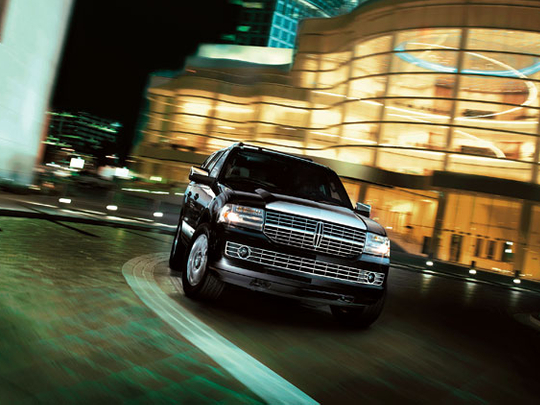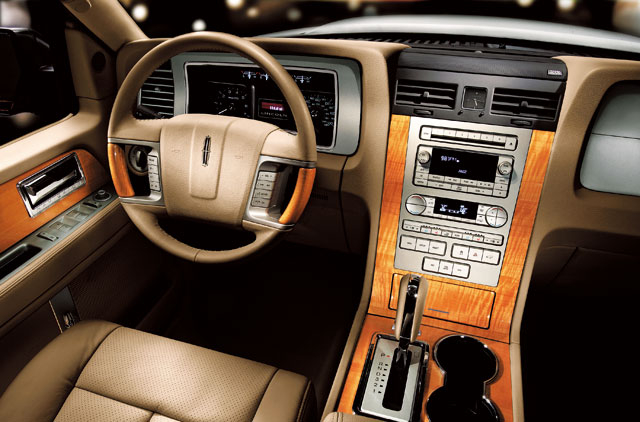
Until a few decades ago, it must have been a challenge for car manufacturers to keep up with competition. A revolutionary design or a new electronic gadget introduced by one brand would probably take months to replicate in another brand. In other words, making changes to the production line took a lot of time, not to mention money.
But the Japanese changed it all. They found ways to make alterations to their cars in the shortest possible time, even while improving production efficiency. And customers were happy because they had more options to choose from and there was something significantly different almost every year.
However, the same could not be said about most American cars. While the models of many a brand looked quite alike, some even looked similar to other brands within the same group of companies. It seemed like they all shared the same drawing board.
Today, it's a lot easier to make changes to a car that's already in production. A few changes to the CAD file would result in physical changes to the car in no time.
This not only means that cars can improve quickly, it also means that competitors can't hold on to the advantage of being the only brand to offer a certain feature for long any more. If a feature is good and if customers like it, it becomes standard in every car in a jiffy.
Features or feel?
Which brings me to this: Today, the reason for buying a car is no longer dependent on just its features or gadgets because they could be standard across the segment youare considering. Instead, reliability and the way the car feels are what matters most when choosing one car over another.
And this is more than evident in the ultra premium segments where buyers don't really care about how many CDs the car's music system can hold at any given time, or even if the seats are electric powered. Here what the buyer is truly concerned about is how the car feels and how well it's built. All the money goes to the passion that the designer impartedto the car.
Gadget war
Talking about maintenance and build quality, most cars today have excellent engineering and designs that have been developed over the years. In such vehicles, engines and transmission systems are the last things that fail. The 2010 Lincoln Navigator is one such SUV. Although it's loaded with all the modern gadgetry that's found in premium cars these days, that's not the only thing that's appealing about it. It's the vehicle's massive 5.4 litre V8 engine that produces around 310 horsepower which is good enough to get the job done, though not really something to boast about these days, considering the size of the engine.
The Navigator is not designed to outperform its competition off-road. It's a large road-going SUV with a lot of luggage space, a big towing capacity and a 4x4 mode that can help it navigate almost all kinds of terrain that's not extreme. Its engine produces all the horsepower it needs to perform these tasks. Anything more would have just added to the owner's ego and not it's utility.
The V8 power plant ensures that the ride is smooth and fuel efficient while delivering the right kind of torque that makes it tarmac friendly.
In short, the Navigator's gadgetry and power are only secondary to its main attraction which is size and space. This is an SUV for those who need a lot of space combined with a feeling of luxury.
The looks
The Navigator is quite a large car. It feels even larger once you are in it. The rear seats, which are separated by a huge cool box in between, have a lot of leg room.
The third row of seats can be folded flush with the floor of the SUV, revealing a massive storage area that can probably accommodate everything a family of four needs for a week of camping in the desert.
The interiors are spaciously laid out and the dashboard is functional and basic. In terms of how the interiors look, I feel that it could have been a lot better - both in terms of looks and build quality, but for this price not many would complain.
In terms of features and electronics within the car, it comes with everything one needs. A premium sound system, an easy-to-use navigation aid as well as auxiliary inputs for your external media players. The rear seat entertainment is great as well and in my opinion isa good way to keep kids occupied, especially on long road trips.
Although this Lincoln is quite a large SUV, it does ride a little low and the front bumpers ensure that its off-road functionality remains limited. This makes sense to a certain extent because the Navigator isn't your usual choice for an off-road vehicle. It's usually among the first five if one needs a luxury vehicle that's affordable and large.
The Navigator does a good job cruising on highways. It's beefy, yet smooth suspension system takes in most of the minor irregularities on the road without letting the occupants feel a thing. I'm pretty sure that it would feel just as comfortable on gravel roads as well.
At highway speeds, it feels stable and composed and of course verylike an American car. Everythingis large, including the switches onthe dashboard.
In the city, it handles quite well for its size and I think it has a lot to do with the steering wheel being just right for this car. At first it may seem like it's a little too big to manoeuvre and fit into tight parking spaces, but it's easy once you get used to it.
Overall, I liked the way this SUV felt on tarmac. It's not as agile as I would have liked it to be, but it's definitely not bad either.
I did not take the Navigator off-road simply because Lincolns are not about ruggedness or off-tarmac prowess. Instead it's a typical representation of the American car in the SUV form. It feels just like the legendary Town Car - smooth, quiet and refined - just taller and with a lot more volume.
The 2010 Navigator comes at a starting price of Dh235,000.
- Philip Shane is a Dubai-based motoring enthusiast and a member of the Guild of Motoring Writers, UK











